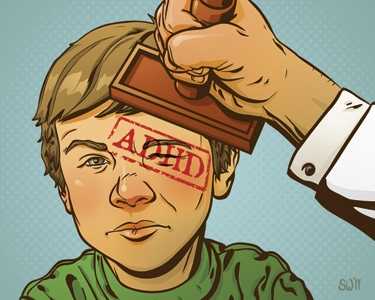Like most parents, you believe your children are special. You believe they are the best and you shower them with as much love, affection and care as you can.
You also believe your children are normal. Not the “boring” kind of normal, but the “I can get along with most people” kind of normal. Because of that, it’s hard to imagine there’s anything wrong with your children at all. And yet, you can’t help but wonder.
Reading the Signs
You wonder whether your child’s displays of hyperactivity, inattention and impulsivity are normal or signs of trouble. You wonder whether your child’s inability to get along with peers can be fixed with a stern word or two, or if it’s a personality problem requiring tougher measures.
You wonder, with no small amount of guilt, whether the recent upheavals in your life — a divorce, job loss, a close relative’s terminal illness — had anything to do with how your child turned out.
But you don’t want to see a doctor — not right away, at least. You don’t think you’re ready to pay what needs to be paid if your worst nightmare comes true.
So you ask around. You gather opinions from friends, family, co-workers and even close acquaintances, whether they’ve had experiences with children like yours or not. Unsurprisingly, you receive either vague or conflicting advice from these otherwise well-meaning people.
Some of them tell you to relax and reassure you “Every kid’s like that at that age.” Others try the not-so-subtle approach of suggesting you take a parenting class to keep the jitters at bay. The rest will be blunt with you and say: “Your kid needs help.”
Are You Overreacting?
Of course, you decide to take the least-optimistic course of action. After all, it’s better to be prepared for the worst-case scenario when it comes, right?
But then, what if you’re overreacting? What if your child becomes a victim of over-diagnoses, which happens more often than you’d like?
On the other hand, what if you’re right? What if there is something wrong with your child, and you’re just fighting an understandably strong state of denial? What if you can still save your child before it’s too late? These are the stressful questions parents have to face at one point or another.
Fortunately, you’re not alone. As shown in the infographic below, you’re not the only parent who’s had to face the reality of having a child with ADHD. Many of these numbers might horrify you, but rest assured there is a way to diagnose your child accurately, without resorting to desperate measures that do more harm than good.
The following infographic is attributable to www.nebahealth.com.
Providing A More Accurate ADHD Assessment
NEBA® is a brand new type of ADHD test approved by the FDA. NEBA is the first medical device based on brain function that can help assess ADHD in children and adolescents. NEBA improves certainty about ADHD. For context, evaluation by a multidisciplinary team of clinicians is the best standard way to achieve certainty about ADHD.
Our study showed that an individual clinician using NEBA could boost certainty closer to that of a multidisciplinary team.NEBA can help clear up complex cases. Some children may have ADHD symptoms that are actually due to other conditions. NEBA helps the clinician identify these children.
NEBA also supports the clinician’s decision to perform further testing with these children, which may clear up whether a different diagnosis is needed. Children may be more likely to receive the care they need.NEBA takes 15-20 minutes, and your clinician performs the testing in the office. NEBA is safe and non-invasive.
NEBA is the first of a new kind of medical device approved by the FDA that uses brainwaves (EEG) to help clinicians more accurately diagnose ADHD in children and adolescents (ages 6 – 17.99 years). FDA created an entirely new category of medical device to regulate NEBA. These devices are called Neuropsychiatric Interpretive EEG-based Assessment Aids or NIEAs for short.
NEBA uses brainwaves (EEG) along with a clinician’s initial diagnostic impression to improve the accuracy of the ADHD diagnostic process. NEBA measures the electrical activity in the front part of the brain to derive a biomarker. NEBA then combines this information with the clinician’s diagnostic impression. Using this data and a patented method, NEBA categorizes children with ADHD symptoms into three groups:
- ADHD – confirmatory support
- Support for further testing – focus on ADHD
- Support for further testing – focus on “other conditions”
Our FDA validation study (available from FDA’s website) showed NEBA’s categorization can help clinicians reduce over-diagnosis of ADHD to as low as 3%.
Why Is NEBA Important?
NEBA is an accurate, quick and insightful way to help clinicians and parents make better decisions about ADHD.
Is NEBA Available Outside The United States?
NEBA is cleared for marketing in the United States. We are also CE marked for use in the European Union (EU) and we are licensed by Health Canada. Even though we can market in the EU and Canada, NEBA is currently available only in the US.







